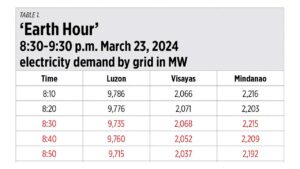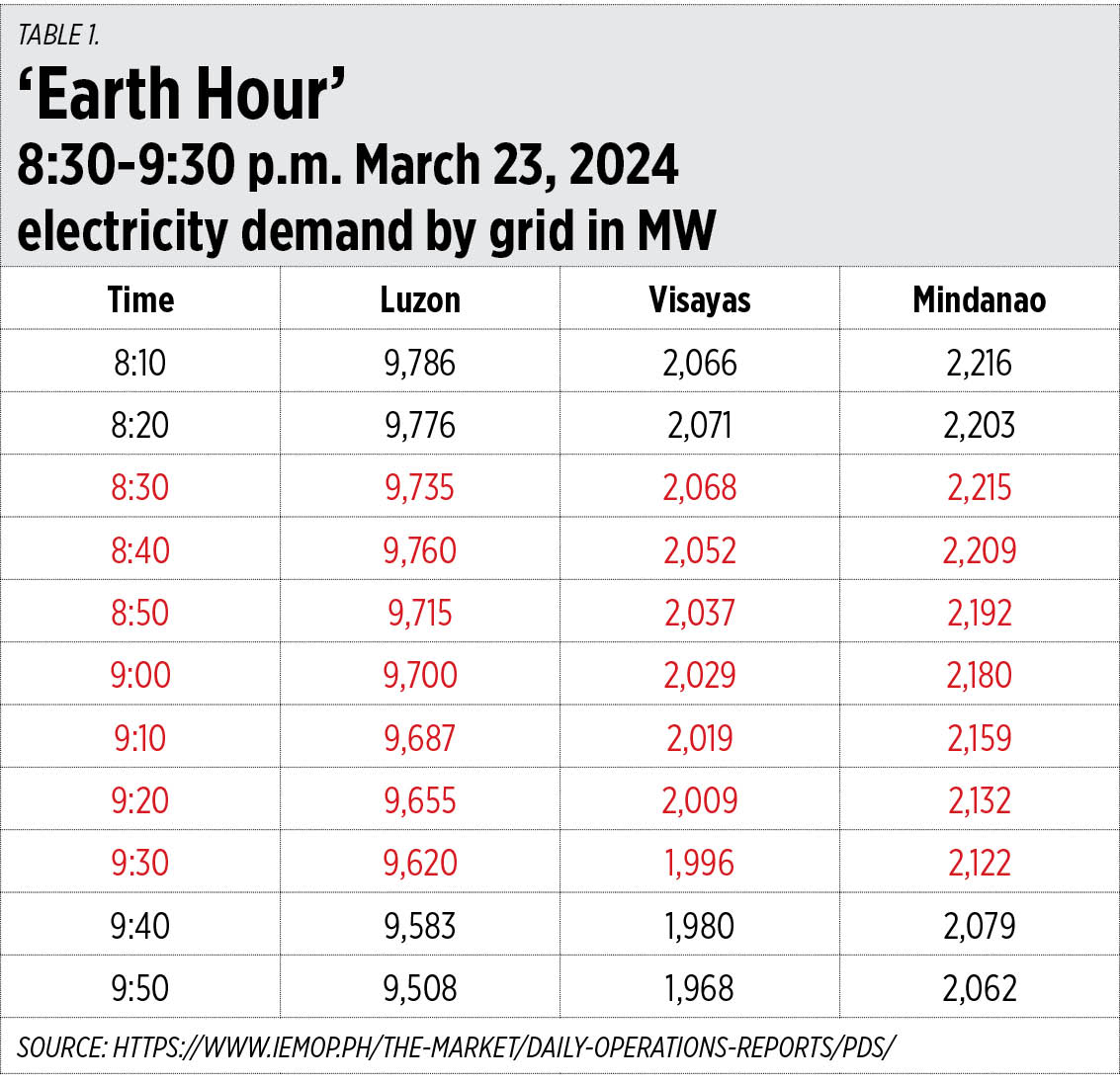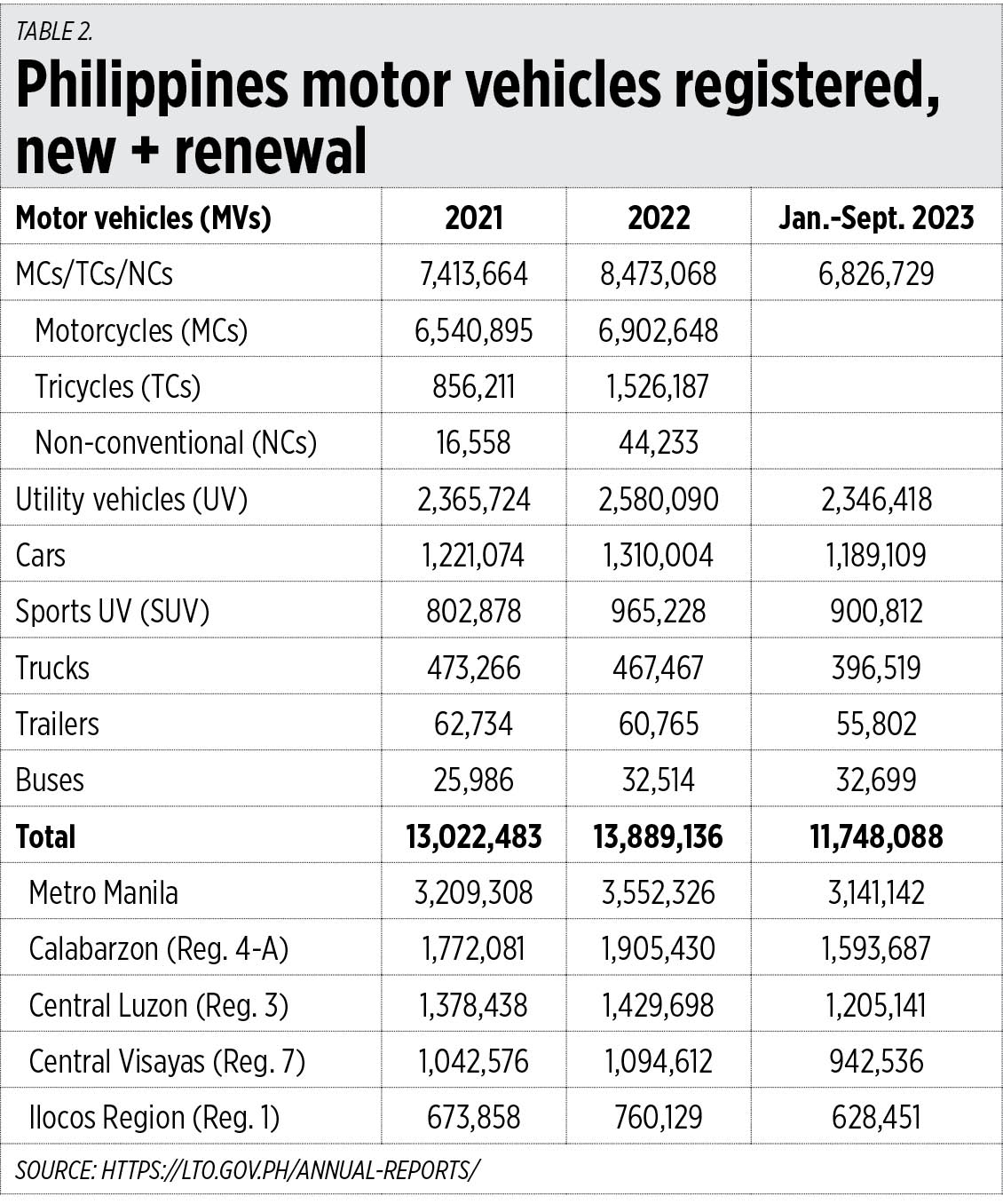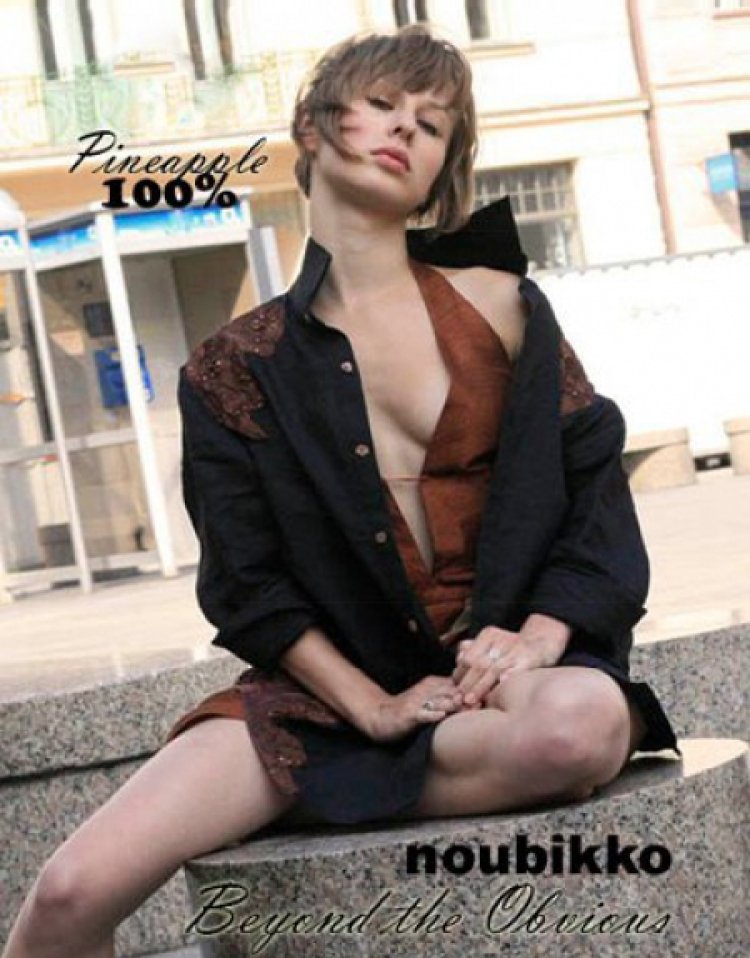On Earth Hour, Lenten travel, and Pinoys in Toronto
As it is Holy Week, I will briefly cover four light topics to adjust to slow/non-work mode of most people. ‘EARTH HOUR’ 2024 Last Saturday evening saw the annual celebration of “Earth Hour” where people shut off their lights for an hour. This is practiced in many cities around the world to help “save the […]

As it is Holy Week, I will briefly cover four light topics to adjust to slow/non-work mode of most people.
‘EARTH HOUR’ 2024
Last Saturday evening saw the annual celebration of “Earth Hour” where people shut off their lights for an hour. This is practiced in many cities around the world to help “save the planet.” How effectively was it done in the Philippines? I checked the data in the daily operations report of the Independent Electricity Market Operator of the Philippines (IEMOP). The decline in electricity use between 8:30-9:30 p.m. was mainly because people were going to sleep, which one deduces since the electricity use did not increase after 9:30 p.m. In the Luzon to Visayas to Mindanao grids (see Table 1).
That day, March 23, the electricity generation mix was: coal 67.5%, natural gas 13.3%, geothermal 9.3%, hydro 4.8%, solar + wind + biomass 4.3% combined.
So, it was a double dud for the Earth Hour campaign. First, people slowly turned off their lights to sleep not to celebrate darkness, and, second, the energy source that Earth Hour campaigners demonize, coal, provided two-thirds (68%) of the total power generation while their beloved energy sources provided less than 5% of the total. The Earth Hour narrative is a juvenile concern that businesses and the public generally ignore.
TRAFFIC AND LENTEN TRAVELS
The regular traffic congestion in Metro Manila will be absent this week and instead transfer to the provinces as millions of people move around.
There were 13.9 million registered vehicles in the Philippines in 2022, 8.5 million of which were motorcycles (MCs), tricycles, and non-conventional MCs. There are two million cars and SUVs. The bulk of those 13.9 million vehicles are found in four big regions — Metro Manila, Region 4-A (Calabarzon), Region 3 (Central Luzon), and Region 7 (Central Visayas) — for a combined 8 million vehicles (see Table 2).
The big challenge in transportation reform is how to reduce the number of small passenger vehicles like MCs and tricycles, whether gasoline or electric. Most provincial roads now are four lanes wide, two lanes each way, with the inner lanes for overtaking or as the fast lane. The majority of tricycles in the provinces stay on the inner lane, forcing cars and other vehicles to overtake on the outer lane, which is dangerous as they travel fast and there are houses, parked vehicles, people, and dogs just one to two meters away.
Local government units (LGUs) are the ones that register, regulate (by issuing local route franchise), and monitor the tricycles. They plus the police should penalize the drivers of these tricycles but they are not doing their job.
FILIPINOS IN TORONTO
When I went to Toronto early this month (my first time to set foot in Canada), I noticed there were many Filipinos there — at the Toronto Pearson airport, at the Novotel North York where we stayed at, at the nearby Tim Hortons coffee shop, at other food shops.
After three days of work — meetings and site visits as part of the Philippines Nuclear Trade Mission to Canada — two Filipino friends toured me around other parts of the big city.
Ulysses “Uly” Veloso is my friend from the Congress Mountaineers, from back when I was working at the House of Representatives in the 1990s. Along with our buddies, we climbed many mountains, including a Mt. Pinatubo traverse climb in 1994, which started from Pampanga to the volcano crater and then exited at Zambales, a trek of six days and five nights.
Uly was an Arts and Design professor at the College of St. Benilde in Manila, with part-time video production and professional sculptor business. Ten years ago, he migrated to Toronto with his only son, Ulap, who is the same age as my older daughter. Uly is now a Lead Artist at a custom art and architectural fabrication company in Toronto. He took me to a big beer and liquor store near his place. I was amazed at the wide variety of products from Canada and abroad. I think less than 10% of those beer brands are available in Manila.
Among the things he likes in Canada are the higher skills and knowledge of the people, that arts technology and programs are comparatively cheap, and that their high school students already gain the sort of experience that are available only to university students and graduates in the Philippines. Arts workshops are freely available almost anywhere.
All this plus social and financial security, a justice system that works to protect one’s properties, and extensive and good road infrastructure. Taxes are high but people enjoy the benefits. About 80% of the people there are polite and friendly.
Another friend, May Tabujara, and her hubby toured me around another side of Toronto near the big Lake Ontario. May works as a cosmetic/oculoplastic surgery professional in a private hospital in Toronto. She has been living there since 2008. She admires the social and financial security, the infrastructure in Canada, but is a bit wary of the rising incidence of car theft and a big influx of non-vetted immigrants.
CLEAN-HEARTED FILIPINAS
I want to mention two Filipinas with clean hearts, among so many here.
First is Dr. Ma. Judea “Dea” Millora, my “kinakapatid” or non-blood related sibling. Ate Dea is my free one-text-away physician. She is an integrative medicine practitioner. I was able to discontinue my personal HMO for several years now with her help. If I feel unwell, she will sometimes request certain laboratory tests and I show her the results, or she would give me some proven medications and maintenance meds for a few months. My daughters would occasionally consult her too.
Ate Dea and family own a large agro-forestry farm in Pangasinan which is planted with mangoes, and industrial and endemic forest trees. The rest is grassland. They have considered me their kinakapatid since the 1980s when their younger brother, and my best friend in UP, Mil Millora, died in a car accident in 1986. I have helped monitor their farm since 1992 and I like it. I am not paid to do this, I like doing it — to visit a large piece of land and make certain improvements there, getting my hands dirty touching the soil and trees.
Ate Dea is a cancer survivor and has slowly moved towards a cancer specialization combining modern medicine and lifestyle and diet changes. She likes doing it and would charge poor patients little, especially those in regular severe pain. She is a devote Christian and never compromises her church duties with professional and family duties. A thousand blessings to her.
Another exemplary Filipina is Nina Bantoto, daughter of my friend from the University of the Philippines School of Economics, Arlene Bantoto. Nina has autism, diagnosed when she was three years old. She struggled to speak and could not fully express herself. But what she lacked in verbal articulation, she more than made up for with her immense talent in drawing, sketching, and painting.
Now 27 years old, she has created masterpieces of color and is an international artist who has held several exhibits in Manila and Macau, and at the United Nations and at the Philippine consulate in New York. In 2017, she was part of a select group of featured artists with autism to represent the country in the United Nations in celebration of World Autism Day in New York. In 2018, she held her first solo exhibit, Chiquitita, with a portion of the proceeds donated to REACH foundation, a nonprofit organization dedicated to helping Persons with Disabilities from depressed communities.
Last February she held her second solo exhibit, titled Enter the Dragon, about Chinese Zodiac animals, at the prestigious Galerie Joaquin at the Podium Mall in Mandaluyong City. Part of the proceeds were again donated to the REACH foundation. More blessings to you, Nina.
Bienvenido S. Oplas, Jr. is the president of Bienvenido S. Oplas, Jr. Research Consultancy Services, and Minimal Government Thinkers. He is an international fellow of the Tholos Foundation.















